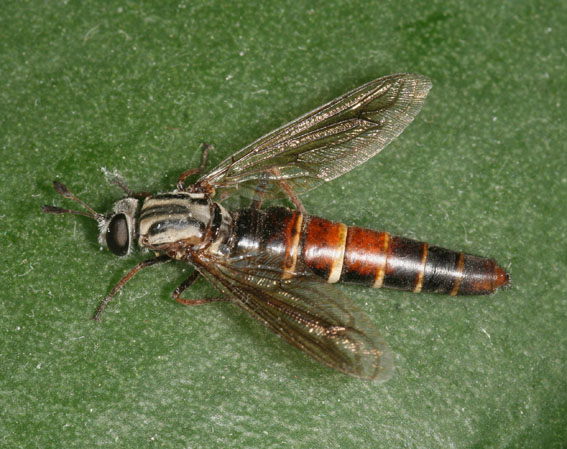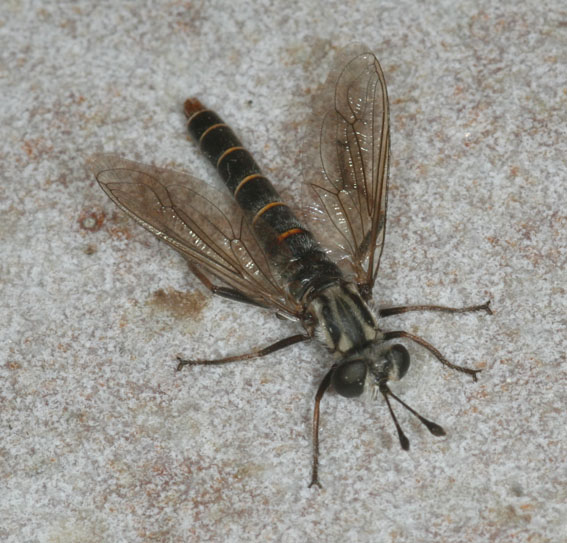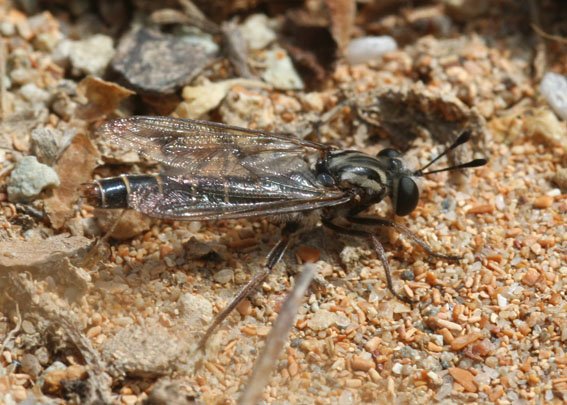Diptera.info :: Identification queries :: Diptera (adults)
|
Mydidae: Leptomydas sp.
|
|
| Pietro |
Posted on 22-08-2008 18:47
|
|
Member Location: Alghero Sardinia Italy Posts: 973 Joined: 16.09.06 |
Alghero, Sardinia 09/08/2007 dimensions: (1?) Araund 22 mm. (2?) around 18. Same site: sand dunes near the sea. Female and Male of the same species (possible L. sardous) or 2 different species? Thanks in advance Pietro attached the following image:  [111.36Kb] Ciao Pietro |
|
|
|
| Pietro |
Posted on 22-08-2008 18:49
|
|
Member Location: Alghero Sardinia Italy Posts: 973 Joined: 16.09.06 |
Second: photo 1
Pietro attached the following image:  [120.57Kb] Ciao Pietro |
|
|
|
| Pietro |
Posted on 22-08-2008 18:51
|
|
Member Location: Alghero Sardinia Italy Posts: 973 Joined: 16.09.06 |
second photo 2
Pietro attached the following image:  [119.75Kb] Ciao Pietro |
|
|
|
| jorgemotalmeida |
Posted on 23-08-2008 00:50
|
|
Member Location: Viseu - PORTUGAL Posts: 9296 Joined: 05.06.06 |
the last two are safely Leptomydinae. The shape of antenna is typical for Leptomydas sp. (the other Leptomydinae is Syllegomydas... but this is not the case) The first is a Leptomydinae, not sure if it is also Leptomydas. It would be great if you have Perissocerus - the shape of antenna is really crazy. Like a Trifolium leaf.  I never saw one but I know they are extremely fast flies. They also are very common in the West Coast of Australia.  |
| Torsten Dikow |
Posted on 17-06-2009 19:48
|
|
Member Location: Washington, DC, USA Posts: 12 Joined: 17.06.09 |
Hi Pietro, All of the above specimens are Leptomydas sardous. The females and males of Mydidae are sometimes differently coloured and therefore difficult to associate. The females are most often also bigger than the males. Since you collected all specimens at the same time at the same locality, it is fair to assume that they represent the same species. Great images! Torsten DikowT@si.edu http://asiloidfli... |
| Pietro |
Posted on 18-06-2009 17:00
|
|
Member Location: Alghero Sardinia Italy Posts: 973 Joined: 16.09.06 |
Hi Torsten I've noticed that the Leptomydas of the prevoius year (2007) have got the flies darkness venations. is it varibility? Ciao Pietro |
|
|
|
| Torsten Dikow |
Posted on 18-06-2009 17:10
|
|
Member Location: Washington, DC, USA Posts: 12 Joined: 17.06.09 |
It could certainly be varibaility in wing colouration, but I am not sure. I have only seen few museum specimens of this species so far. I think it would be interesting to look at all three Leptomydas species in detail (corsicanus, lusitanicus, sardous) as they are said to co-exist on Corsica, but only a single species is on Sardinia. Now that more specimens are being photographed and collected one could start such a project.
Torsten DikowT@si.edu http://asiloidfli... |
| Jump to Forum: |













